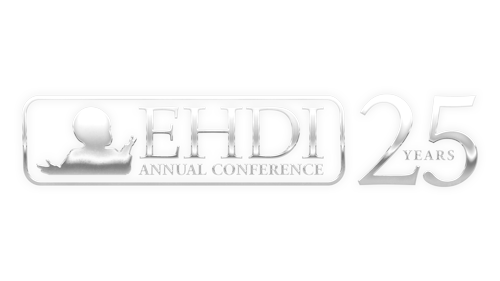2026 Early Hearing Detection & Intervention Conference
March 15-17, 2026 • Jacksonville, FL
3/14/2022 | 12:35 PM - 1:00 PM | Accurate and unbiased information about language outcomes: How would we know? | Room 7
Accurate and unbiased information about language outcomes: How would we know?
There is broad consensus that families of recently-identified deaf and hard-of-hearing (DHH) children benefit from receiving accurate and unbiased information about the options for maximizing their child’s development. However, there appear to be no readily-available or broadly-accepted frameworks for evaluating either accuracy or bias in the information that is (or is not) provided to these families. The absence of such frameworks is a barrier to quality improvement efforts in EHDI systems: without them, it is impossible to identify where excellence is demonstrated, where improvement is needed, and how progress can be measured.
This presentation offers an initial proposal for what such frameworks could look like, and how they could be implemented. Although this presentation focuses on information about language outcomes, the principles are broadly generalizable. The central argument is that both accuracy and bias should be evaluated by examining the magnitude of the gap between what is empirically documented and how a representative sample of the target population interprets them. For example, consider the following statements: (1) “Most DHH children’s spoken language outcomes fall within the average range.” (2) “DHH children are at roughly 3 times the risk of not developing age-appropriate proficiency in spoken language.” Mathematically speaking, both statements are equally accurate. Is either unbiased? I argue that the answer depends on how each statement is interpreted by the target audience. Statement (1) may lead families to underestimate risk, whereas Statement (2) may lead them to overestimate. In contrast, a perfectly unbiased statement would result in the target audience having expectations about language outcomes that are, on average, commensurate with what has been empirically documented, either locally or in the (reasonably-recent) research literature. Those interested in helping to develop this framework further are encouraged to contact the presenter.
- Identify and differentiate 5 different forms of bias
- Explain how the same facts can be framed in starkly contrasting frames without changing accuracy
- Describe the proposed goal of minimizing interpretation error
Presentation:
This presentation has not yet been uploaded.
Handouts:
Handout is not Available
Transcripts:
CART transcripts are NOT YET available, but will be posted shortly after the conference
Presenters/Authors
Matthew Hall
(Primary Presenter), Temple University, matthall@temple.edu;
The overarching goal of Matt Hall’s research program is to maximize all d/Deaf children’s developmental potential. As an assistant professor of Communication Sciences & Disorders at Temple University, he applies knowledge from cognitive/developmental psychology and linguistics to questions that concern DHH children, their families, the professionals who serve them, and other stakeholders. He is particularly concerned with the paucity of evidence regarding language acquisition and psychological development in DHH children whose hearing parents have chosen to include ASL as part of their child’s access to language. In his reading of the literature, strong and contradictory claims have been made without sufficient empirical support. He is therefore committed to increasing the quality of the empirical evidence so that clinicians and families can make better-informed decisions.
ASHA DISCLOSURE:
Financial -
• Receives Grants for Independent contractor from NIH/NIDCD.
Nonfinancial -
No relevant nonfinancial relationship exists.
AAA DISCLOSURE:
Financial -
No relevant financial relationship exists.
Nonfinancial -
No relevant nonfinancial relationship exists.
